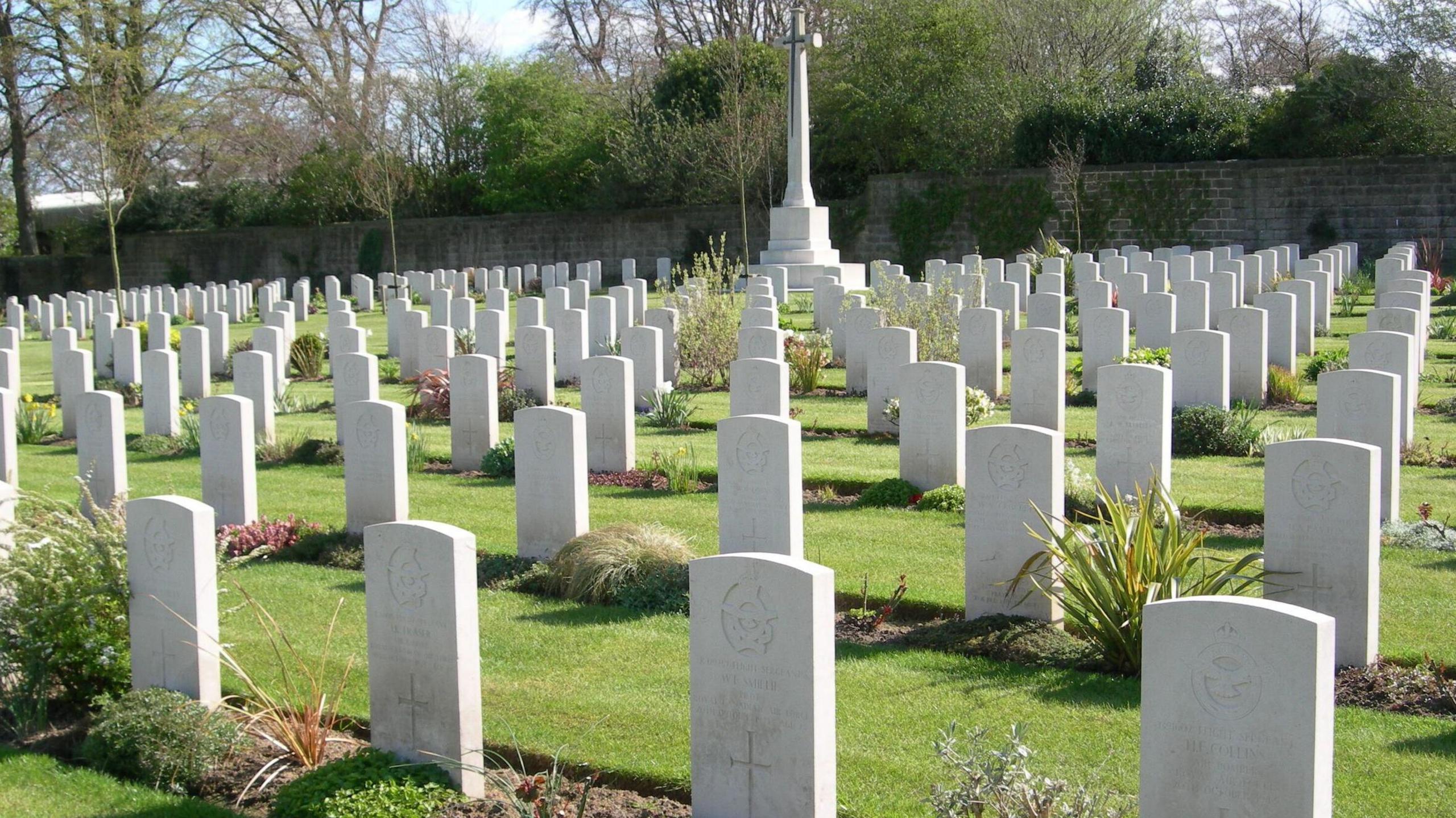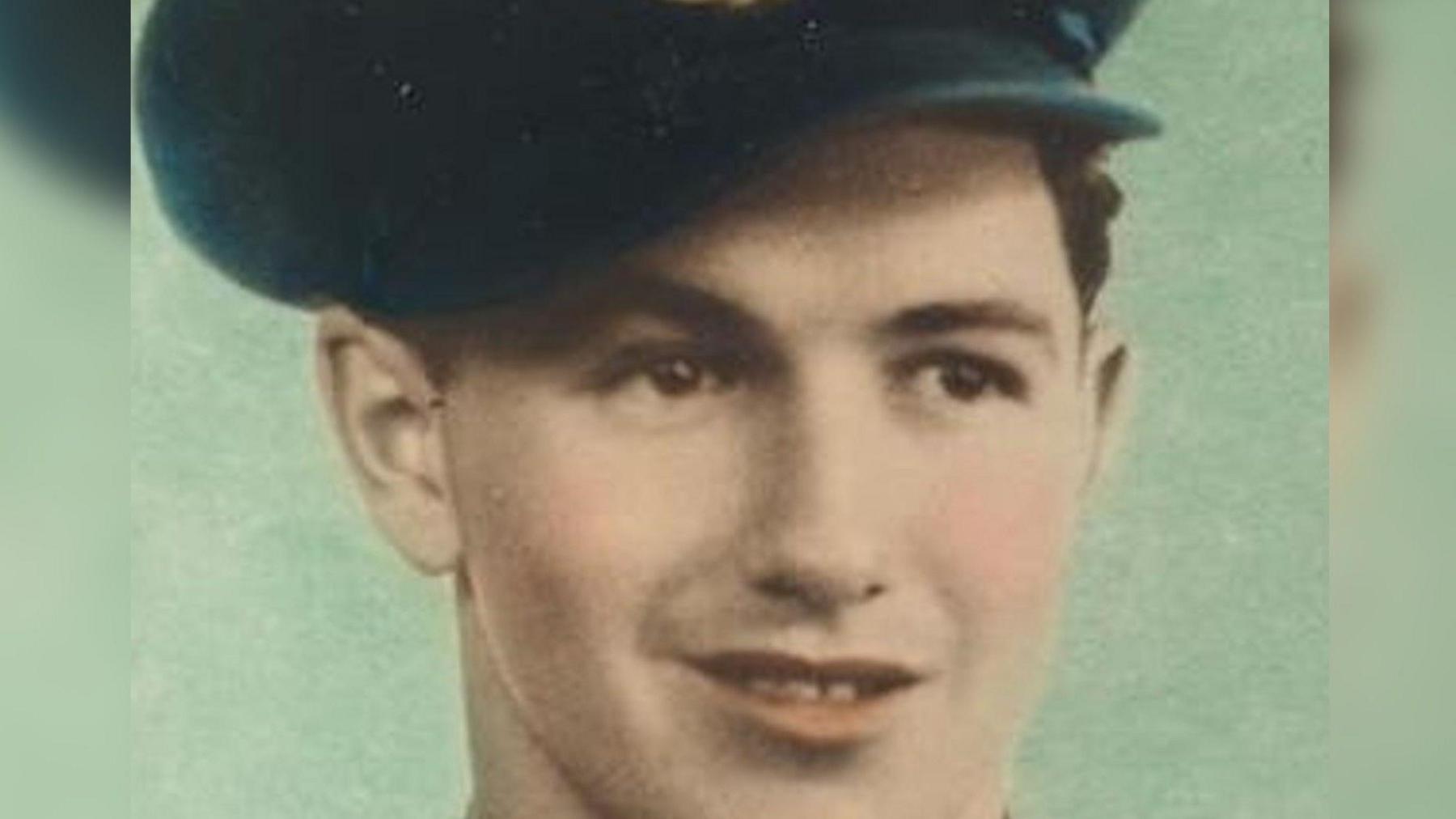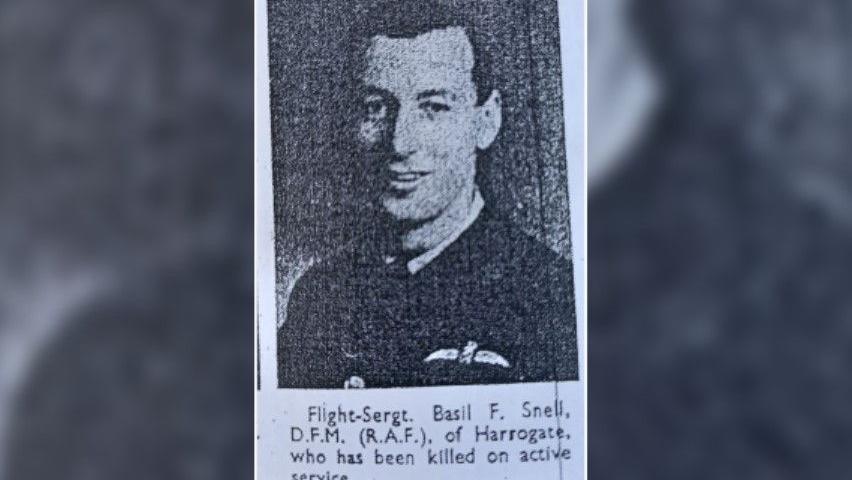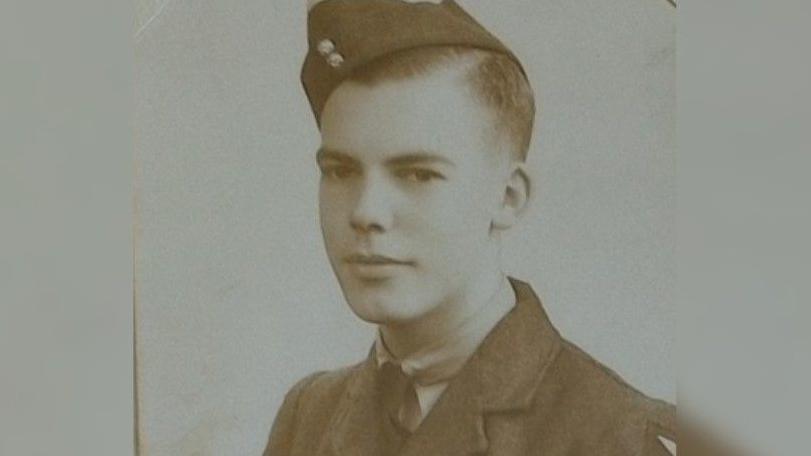Stories of war dead shared from beyond the grave

Almost 1,000 servicemen and women are buried at Harrogate's Stonefall Cemetery
- Published
The forgotten stories of five RAF volunteers buried in war graves have been told for Armed Forces Day on Saturday.
The airmen are among the 1,000 servicemen and women who were laid to rest at the Stonefall Cemetery in Harrogate.
The Commonwealth War Graves Commission shared details of their lives as part of a project to celebrate the Royal Auxiliary Air Force, a volunteer arm that supplied personnel to reinforce regular units. The RAuxAF marks its 100th anniversary this year.
The graves belong to those who saw action in World War Two and came from all corners of the world to enlist with British forces, but who were not killed in combat.

Flt Lt Vincent Bushy Parker survived four years as a prisoner of war
Spitfire pilot
Flt Lt Vincent Bushy Parker grew up in Australia after emigrating there when he was a child.
From a young age, he was said to be quite the illusionist, mastering any card trick or wizardry he could find.
En route back to England as a steward on a passenger liner, he decided to follow the path of his older brother and become a fighter pilot.
He was known to have flown in the Battle of Britain and was credited with shooting down five German aircraft.
However, on 15 August, 1940, his Spitfire was shot down near the Isle of Wight and he was captured by the Germans as a prisoner of war.
Eventually taken to Colditz and determined to escape life under German rule, he used his knowledge of trickery to try and fool his captors.
From tunnelling to lock-picking, to impersonating German soldiers, his quest for freedom was relentless.
After nearly four years in captivity, he and his comrades were released following liberation by the Americans in 1945.
He returned to England to serve with the RAF. However, less than a year later, the 27-year-old's aircraft crashed while on exercise and he was killed instantly.

Flying Officer Urlic Leslie Look Yan was one of 250 volunteers from Trinidad who fought in the Second World War
Trinidadian volunteer
In 1940, Britain established its Commonwealth Air Training Plan, an agreement between the UK, Canada, Australia and New Zealand, to train 50,000 air crew a year for as long as needed.
Many of the trainees also came from other countries, including 19-year-old Urlic Leslie Look Yan.
Having spent four months of initial training in his home country of Trinidad, he came from the Port of Spain to spend several months in Canada, where he trained as a pilot.
In 1943 he was posted to England to continue his training, moving eventually to RAF Milfield, near Northumberland, where he learned to fly the RAF's Hurricane fighter planes.
On 14 January, 1944, the flying officer flew into cloud at high speed while engaged in a low-level, cross-country flight, crashing his plane near the town of Wooler.
The RAF said the 21-year-old was one of 250 volunteers from Trinidad who flew in combat with the RAF during the war, with 50 dying in action.

Sgt Isikeli Doviverata Komaisava is understood to be the only Fijian who served with the RAF during World War Two
Sole Fijian
Laid to rest in the Harrogate cemetery, Sgt Isikeli Doviverata Komaisava was buried a long way from home after his death in 1944.
He was descended from the King of Fiji, Cakobaua, and the son of a high chief in the South Pacific island, which was a British colony in the 1940s.
Back then, it was common for the children of high chiefs to study in New Zealand, which is where he spent three years before returning to Fiji with plans to become a surveyor.
However, having read that Britain needed every able-bodied man to join the war effort, he asked his father's permission to volunteer.
Aged 21, he was accepted into the RAF and after training in Canada, served as a pilot with 234 Squadron, based in the south of England.
He died in Aylesbury Hospital in 1944 aged 24 from lung disease and is understood to be the only Fijian who served with the RAF during World War Two.

Flt Sgt Basil Furnace Snell was awarded the Distinguished Flying Medal
Local hero
Although many of those who lost their lives during the war are buried far from their homeland, Flt Sgt Basil Furnace Snell rests in his home town of Harrogate
Born in 1914, he graduated from his scholarship at Christ Church Grammar School to become a clerk at an accountancy firm.
He joined the RAF in 1940 and during the war made 16 operational flights.
One of those flights earned him the award of the Distinguished Flying Medal for his courage and determination in September 1942.
He was captain of a Whitley bomber aircraft flying near the Isle of Lewis when he detected a surfaced German submarine almost seven miles away.
He flew through low cloud and over rough seas, emerging at 20ft to attack, killing 43 people on board.
News of his achievements made the newspaper headlines in Yorkshire.
But in May 1943, aged 28, he was killed alongside two trainee pilots in a flying accident over Lincolnshire.

Flt Sgt Donald Hopkins died after his damaged aircraft crashed over the Yorkshire Wolds
Crash victim
"A sad death in a beautiful place" is how the family of 21-year-old Flt Sgt Donald Hopkins described the crash site that claimed his life.
Born in Newcastle-upon-Tyne in March 1923, he worked as an accountant in Gateshead before volunteering and becoming a navigator with the RAF in 1941.
On the night of 22 April, 1944, Sgt Hopkins, along with six other members of his crew, were sent on a mission to bomb Dusseldorf - a city which was a focal point of British air raids.
The major attack featured 323 Lancaster bombers, 254 Halifaxes and 19 Mosquito aircraft, dropping in total 2,150 tonnes of bombs.
The raid was penetrated by German night fighters and it is thought that Sgt Hopkins's Lancaster suffered damage, affecting its journey back home.
While his aircraft was able to return to British shores, bad visibility affected the flight which caused the crew to fly too low and ultimately crash over the Yorkshire Wolds near Bridlington.
The whole crew of seven were killed instantly in what is known as one of most tranquil areas of countryside in England.
Follow BBC Yorkshire on Facebook, external, X (formerly known as Twitter), external and Instagram, external. Send your story ideas to yorkslincs.news@bbc.co.uk, external